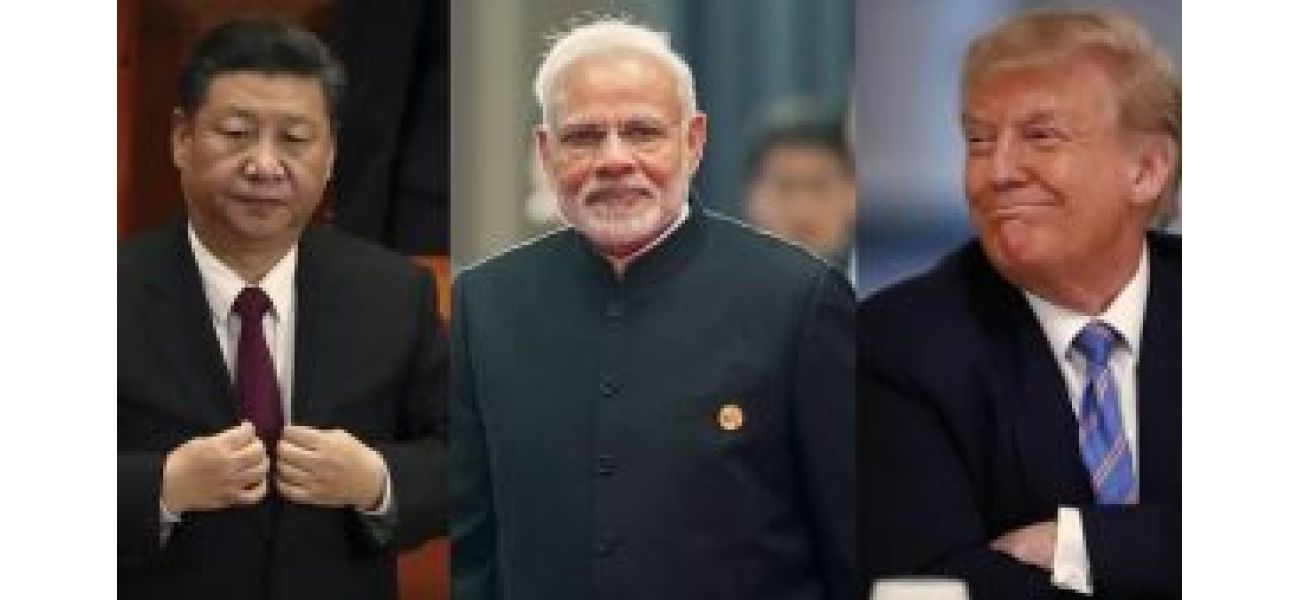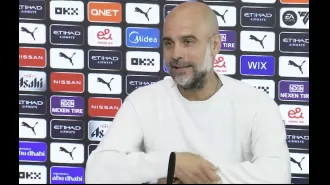Perpetual floating or moving with no specific destination or goal.
India has worked to form a strong partnership with the US for the past 20 years, but this plan has been hindered by Prime Minister Modi's strained relationship with President Trump.
September 1st 2025.

In the past twenty years, India has been focused on strengthening its relationship with the United States in order to establish itself as a counterweight against China in the region. However, this strategy has faced a major obstacle due to the strained personal ties between Prime Minister Modi and President Trump.
Despite its efforts, New Delhi has been unable to secure a trade deal with the aggressive Trump administration. As a result, the US has imposed steep tariffs, including a 25% duty for purchasing Russian oil, which will have a significant impact on India's economy. This is particularly concerning as the US is India's largest export market, accounting for $86.5 billion in trade. Adding insult to injury, President Trump has made disparaging remarks about India's economy and his advisors have accused the country of supporting Russia's actions in Ukraine. These developments have caused significant damage to India's standing in the eyes of the US, and reports suggest that Trump has even cancelled his planned visit to India later this year.
This snub from the US has forced India to reassess its foreign policy and look towards its relationship with China. The mounting pressure from the US and other Western countries has pushed India to seek a diplomatic thaw with China, despite the two nations having a strained relationship for the past five years. This tension was further exacerbated by the Doklam and Galwan clashes in 2020, where Chinese forces killed 20 Indian soldiers during the height of the COVID-19 pandemic.
Recently, Prime Minister Narendra Modi visited China for the first time in seven years and met with President Xi Jinping on the sidelines of the Shanghai Cooperation Organisation Summit in Tianjin. The two leaders agreed to work towards a mutually acceptable resolution to the border issue and pledged to strengthen trade and investment ties.
Prior to Modi's visit, Chinese Foreign Minister Wang Yi also made an official trip to India, and Indian officials, including External Affairs Minister S. Jaishankar and National Security Advisor Ajit Doval, have made discreet trips to Beijing. The focus of these discussions has been on restoring travel and trade connections, revising border protocols, and preparing for Modi's visit to Tianjin.
China, on its part, is taking advantage of the rift between India and the US. This explains why Beijing has been more tolerant towards India while its ties with Washington are deteriorating. However, it is clear that China has never been, and will never be, a friend to India.
With a significant trade surplus in its favor, China is likely to use India as a dumping ground for its low-cost goods. This will only present more challenges for India in terms of strengthening its domestic production capabilities. In contrast, India has a massive trade deficit of nearly $100 billion with China, which will only increase with further trade ties. This will weaken India's position as a global economic player.
The claims of India's current GDP growth and its ranking as the fourth largest economy in the world are questionable, especially in light of the present circumstances. The government may use manipulated data to support these claims, but it is only a matter of time before they are exposed.
Aside from trade, India's attempts to reconcile with China may be seen by many as an effort to legitimize China's aggression towards India in Ladakh and the Northeast. The opposition Congress party has criticized the government for normalizing ties with China despite the ongoing border dispute, calling it a display of "spinelessness."
India's foreign policy has been oscillating between two poles in the name of "strategic autonomy." While the country wants to align itself with the democratic world led by the US, it also maintains close ties with Russia for energy and defense. However, in 2022, when Russia invaded Ukraine, India had the opportunity to take a stand and make a change in its foreign policy. But by remaining neutral in the conflict, India has revealed its lack of clear direction to the world. Any efforts by Prime Minister Modi to speak with the Ukrainian President now will have little impact.
India finds itself at a crossroads, with China as a powerful and hostile neighbor on one side, and an unyielding US led by a President who is personally at odds with the Indian Prime Minister on the other. The choice is clear - India can continue to drift between major powers or establish a foreign policy that is grounded in internal strength.
Despite its efforts, New Delhi has been unable to secure a trade deal with the aggressive Trump administration. As a result, the US has imposed steep tariffs, including a 25% duty for purchasing Russian oil, which will have a significant impact on India's economy. This is particularly concerning as the US is India's largest export market, accounting for $86.5 billion in trade. Adding insult to injury, President Trump has made disparaging remarks about India's economy and his advisors have accused the country of supporting Russia's actions in Ukraine. These developments have caused significant damage to India's standing in the eyes of the US, and reports suggest that Trump has even cancelled his planned visit to India later this year.
This snub from the US has forced India to reassess its foreign policy and look towards its relationship with China. The mounting pressure from the US and other Western countries has pushed India to seek a diplomatic thaw with China, despite the two nations having a strained relationship for the past five years. This tension was further exacerbated by the Doklam and Galwan clashes in 2020, where Chinese forces killed 20 Indian soldiers during the height of the COVID-19 pandemic.
Recently, Prime Minister Narendra Modi visited China for the first time in seven years and met with President Xi Jinping on the sidelines of the Shanghai Cooperation Organisation Summit in Tianjin. The two leaders agreed to work towards a mutually acceptable resolution to the border issue and pledged to strengthen trade and investment ties.
Prior to Modi's visit, Chinese Foreign Minister Wang Yi also made an official trip to India, and Indian officials, including External Affairs Minister S. Jaishankar and National Security Advisor Ajit Doval, have made discreet trips to Beijing. The focus of these discussions has been on restoring travel and trade connections, revising border protocols, and preparing for Modi's visit to Tianjin.
China, on its part, is taking advantage of the rift between India and the US. This explains why Beijing has been more tolerant towards India while its ties with Washington are deteriorating. However, it is clear that China has never been, and will never be, a friend to India.
With a significant trade surplus in its favor, China is likely to use India as a dumping ground for its low-cost goods. This will only present more challenges for India in terms of strengthening its domestic production capabilities. In contrast, India has a massive trade deficit of nearly $100 billion with China, which will only increase with further trade ties. This will weaken India's position as a global economic player.
The claims of India's current GDP growth and its ranking as the fourth largest economy in the world are questionable, especially in light of the present circumstances. The government may use manipulated data to support these claims, but it is only a matter of time before they are exposed.
Aside from trade, India's attempts to reconcile with China may be seen by many as an effort to legitimize China's aggression towards India in Ladakh and the Northeast. The opposition Congress party has criticized the government for normalizing ties with China despite the ongoing border dispute, calling it a display of "spinelessness."
India's foreign policy has been oscillating between two poles in the name of "strategic autonomy." While the country wants to align itself with the democratic world led by the US, it also maintains close ties with Russia for energy and defense. However, in 2022, when Russia invaded Ukraine, India had the opportunity to take a stand and make a change in its foreign policy. But by remaining neutral in the conflict, India has revealed its lack of clear direction to the world. Any efforts by Prime Minister Modi to speak with the Ukrainian President now will have little impact.
India finds itself at a crossroads, with China as a powerful and hostile neighbor on one side, and an unyielding US led by a President who is personally at odds with the Indian Prime Minister on the other. The choice is clear - India can continue to drift between major powers or establish a foreign policy that is grounded in internal strength.
[This article has been trending online recently and has been generated with AI. Your feed is customized.]
[Generative AI is experimental.]
0
0
Submit Comment





